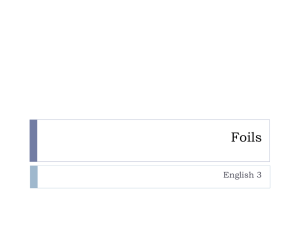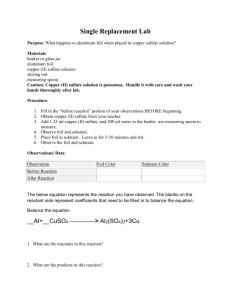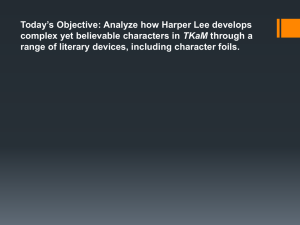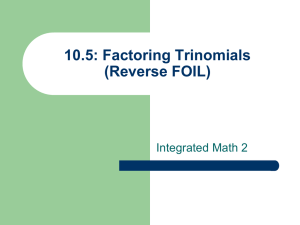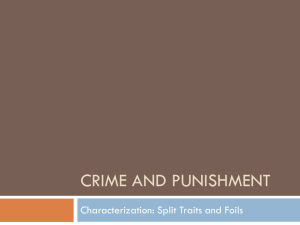October - Living Green
advertisement
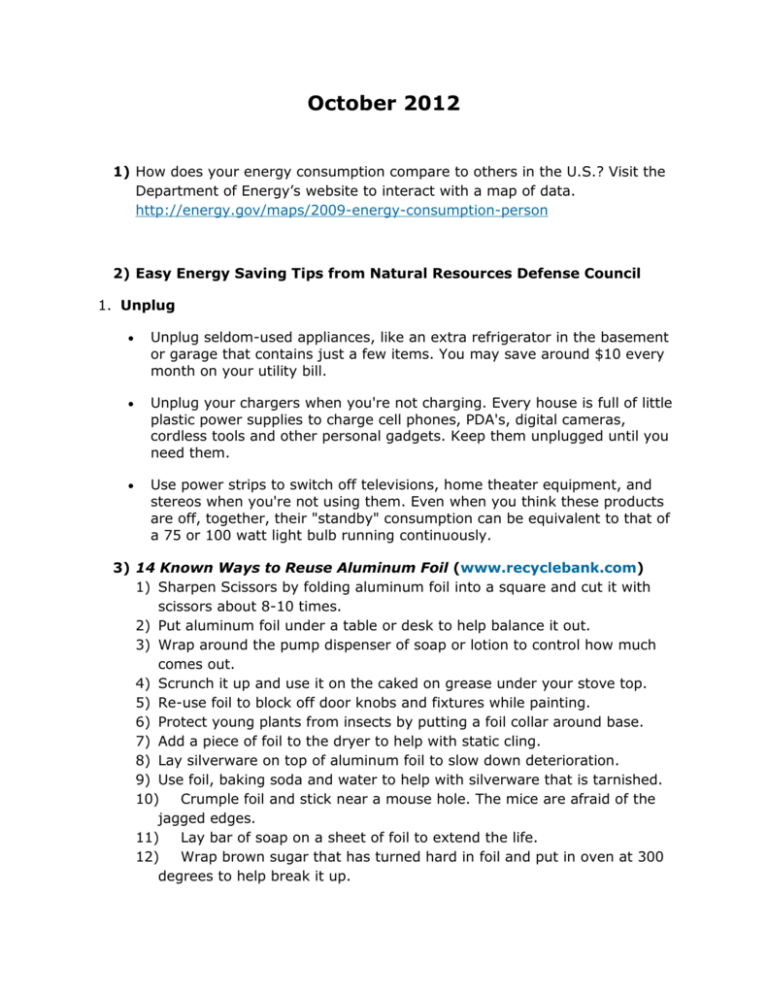
October 2012 1) How does your energy consumption compare to others in the U.S.? Visit the Department of Energy’s website to interact with a map of data. http://energy.gov/maps/2009-energy-consumption-person 2) Easy Energy Saving Tips from Natural Resources Defense Council 1. Unplug Unplug seldom-used appliances, like an extra refrigerator in the basement or garage that contains just a few items. You may save around $10 every month on your utility bill. Unplug your chargers when you're not charging. Every house is full of little plastic power supplies to charge cell phones, PDA's, digital cameras, cordless tools and other personal gadgets. Keep them unplugged until you need them. Use power strips to switch off televisions, home theater equipment, and stereos when you're not using them. Even when you think these products are off, together, their "standby" consumption can be equivalent to that of a 75 or 100 watt light bulb running continuously. 3) 14 Known Ways to Reuse Aluminum Foil (www.recyclebank.com) 1) Sharpen Scissors by folding aluminum foil into a square and cut it with scissors about 8-10 times. 2) Put aluminum foil under a table or desk to help balance it out. 3) Wrap around the pump dispenser of soap or lotion to control how much comes out. 4) Scrunch it up and use it on the caked on grease under your stove top. 5) Re-use foil to block off door knobs and fixtures while painting. 6) Protect young plants from insects by putting a foil collar around base. 7) Add a piece of foil to the dryer to help with static cling. 8) Lay silverware on top of aluminum foil to slow down deterioration. 9) Use foil, baking soda and water to help with silverware that is tarnished. 10) Crumple foil and stick near a mouse hole. The mice are afraid of the jagged edges. 11) Lay bar of soap on a sheet of foil to extend the life. 12) Wrap brown sugar that has turned hard in foil and put in oven at 300 degrees to help break it up. 13) Put sheet of foil under the ironing board to help reflect the heat and iron both sides at once. 14) Cover pie crust with foil during final minutes of baking to keep from browning. Do you have any other ways to recycle aluminum foil? 4) Find Out the Energy Efficiency of Your Home Visit: http://energytrust.org/ 5) “Choosing the Right Water Filter for Your Home: Without Breaking the Bank” http://www.nrdc.org/living/waterair/select-right-filter.asp If you know that you may have contaminants in your water and want to use a filtering system to get rid of them, the Natural Defense Council has a guide for you. There are two general categories for water filters: point of entry and point of use units. Point of entry units treat the water before it gets distributed throughout the house. Point of use models refer to counter top, faucet and under the sink filters. When choosing a filter, make sure it is certified as meeting NSF/ANSI standard 53. NSF-certified filters have been independently tested to show that they can reduce levels of certain pollutants under specified conditions. While the NSF certification program is not flawless, it does provide some assurance that at least some claims made by the manufacturer have been verified. To select the most appropriate filter follow these steps: Step 1: Determine which type of filter system will remove the contaminants in your water such as: Activated Carbon Filter Cation Exchange Softener Distiller Reverse Osmosis UV Disinfection Step 2: Visit the Searchable Directory at NSF/ANSI Certified Drinking Water Treatment Units (http://www.nsf.org/Certified/dwtu/ ) to highlight the contaminants that you want to reduce and identify certified filters that meet those needs. This quote is from Richard Louv, author of “The Nature Principle” and “Last Child in the Woods”. “The future will belong to the nature smart. Those individuals, families, businesses and political leaders who develop a deeper understanding of the transformative power of the natural world and who balance the virtual with the real. The more high-tech we become, the more nature we need.”



